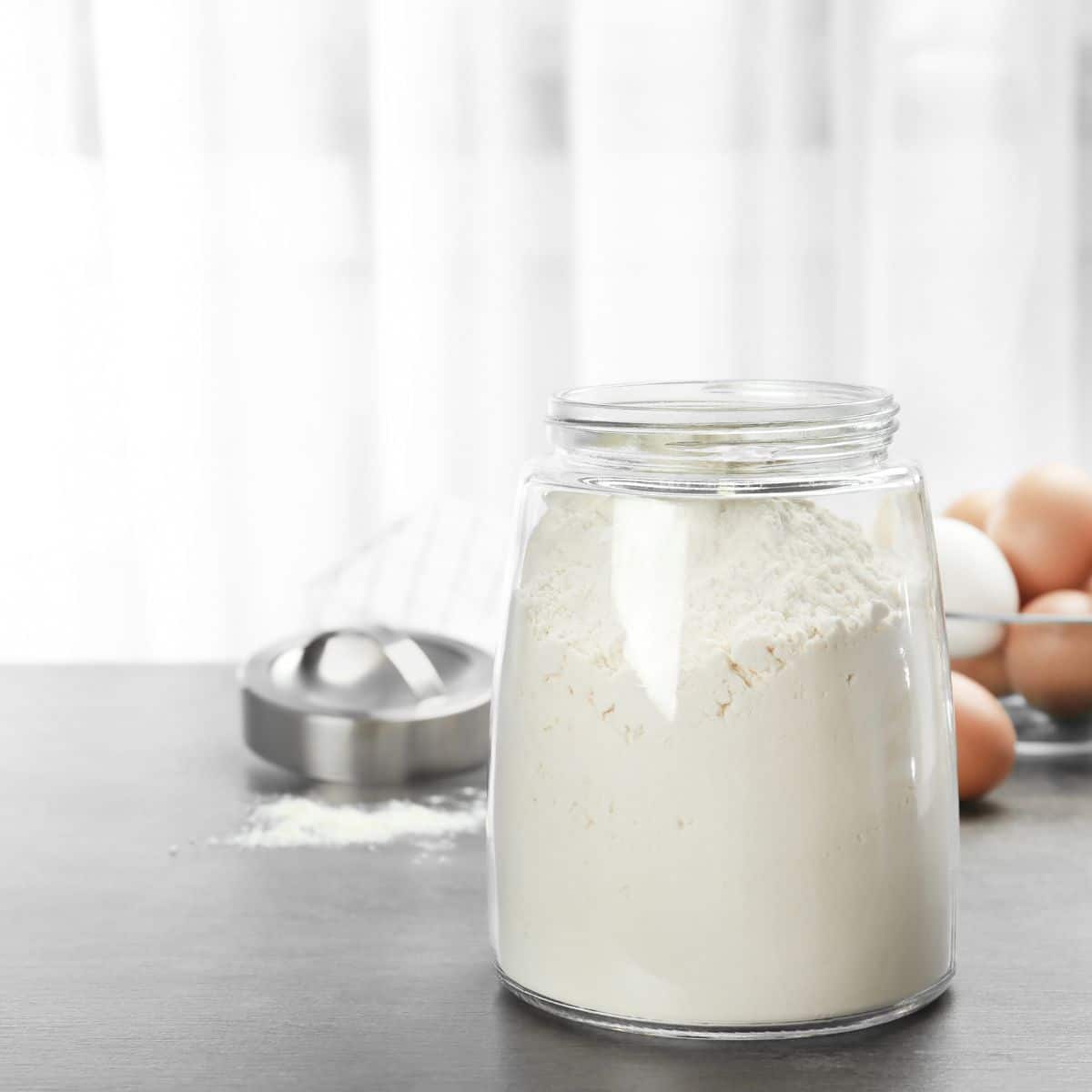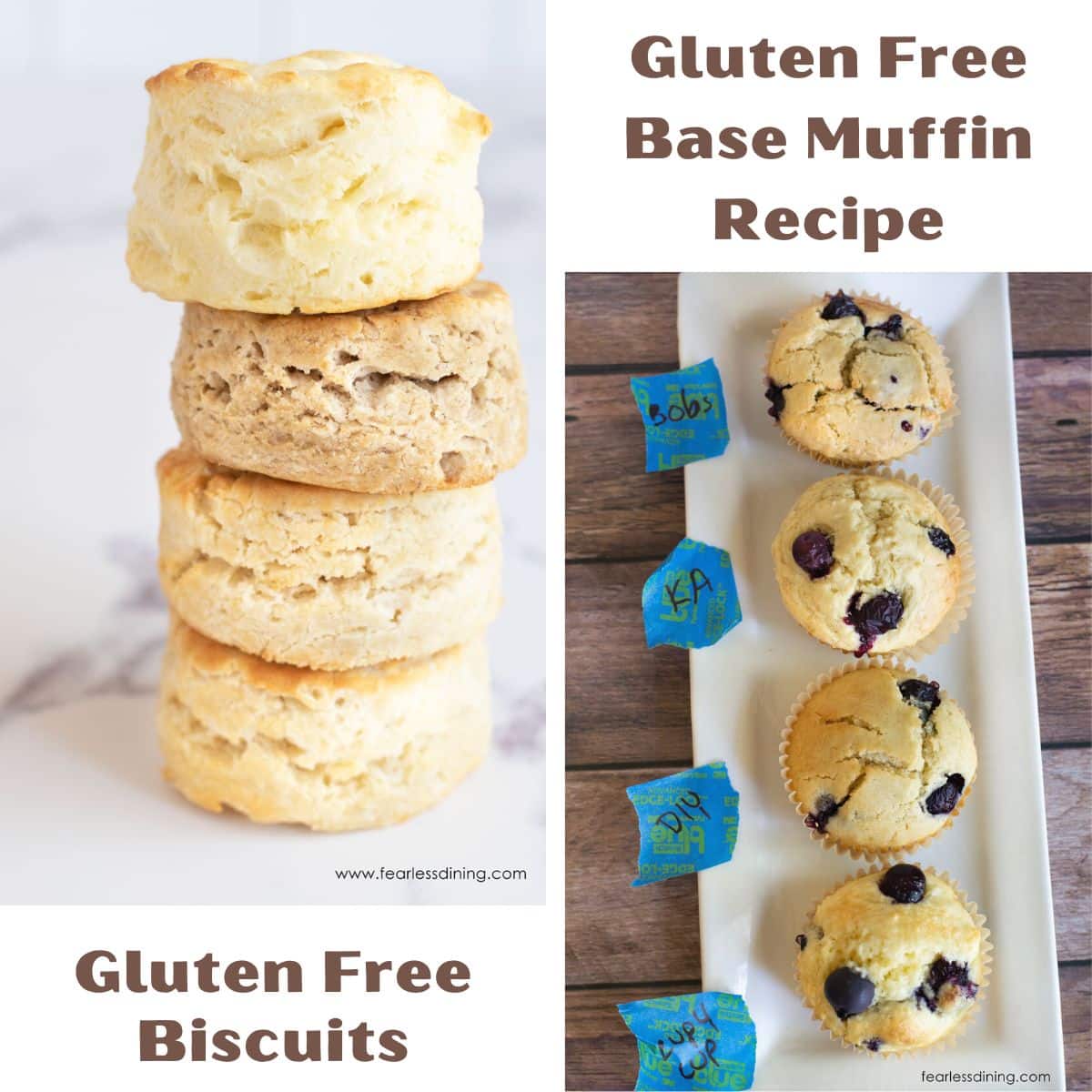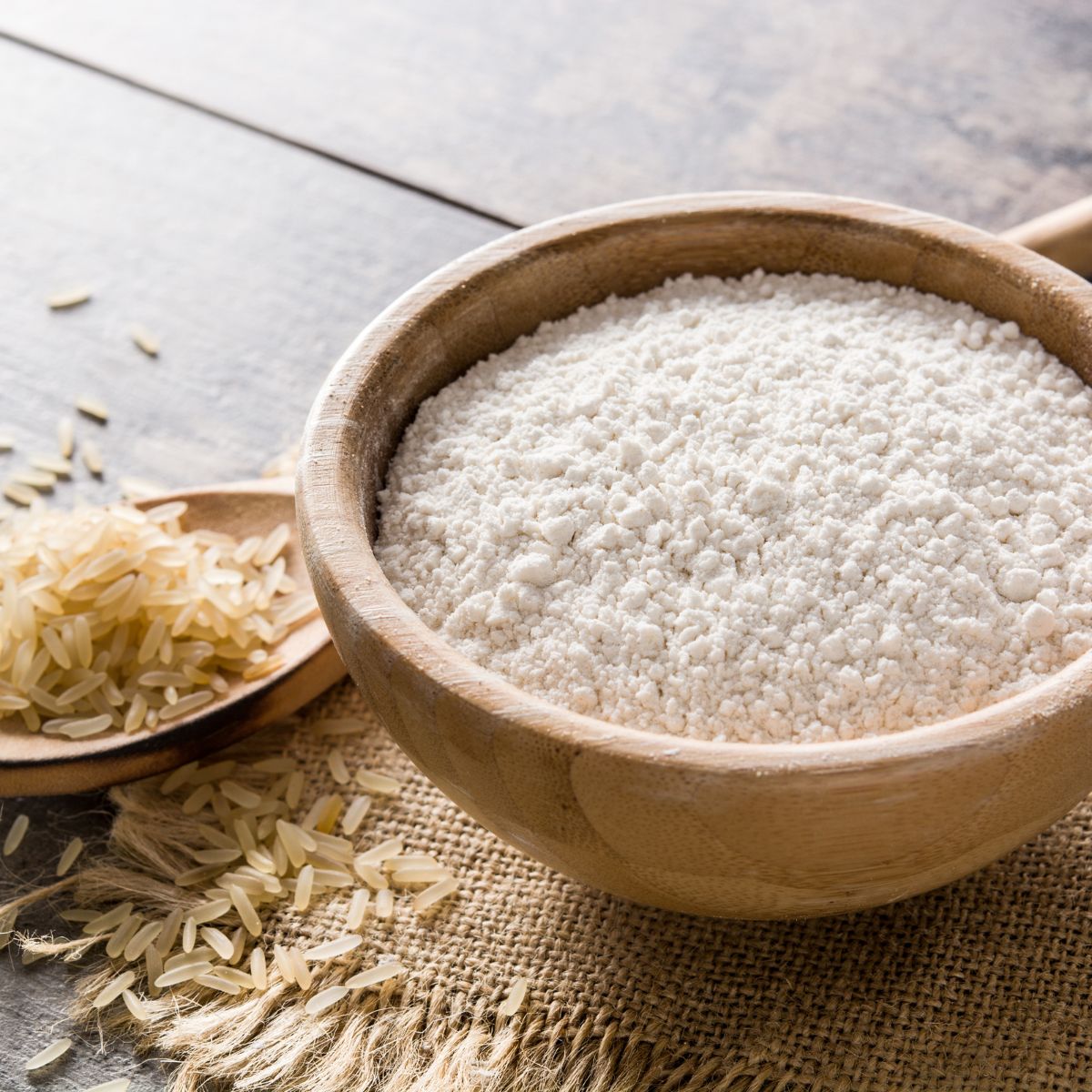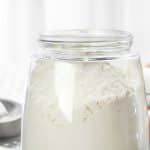Have you ever tried to make the same recipe with different 1:1 gluten free flour blends and get different results? Each flour blend is so different, with different grain-to-starch ratios and ingredients. It can make gluten free baking seem more like a chemistry project! Let’s try to unlock the mystery and try to figure out why the performance of gluten-free flour blends can vary in baking.
This post may contain affiliate links. Please read our Disclosure Policy.

If you have baked the same recipe with multiple 1:1 gluten free flour blends, you know the results can turn out differently depending on the flour blend you use. One blend may need more moisture or less moisture than another blend for the same recipe to turn out.
Why is this, and what can be done so that your baked goods don’t turn out poorly? Gluten free flour is expensive, and the wasted ingredients when we have a “baking fail” can be painful to our pocketbook.
The grain-to-starch ratio of a gluten free flour blend is always important to note, which is one of the main reasons your results can vary so widely. See this post where I measure one cup of all the different flour blends. The variance between each brand is surprising!
Some blends have more grit than others, which requires letting the batter rest for the grit to soften. Experimenting with different blends will allow you to find the one that works best for you. I share lots of my best baking tips to help you as you learn and try different recipes.

Flour Blend Recipe Tests:
If you have doubted that each flour blend is different, check out some of my baking tests! I have two recipes where I tested multiple flour blends in the same base recipe. Check out these results to see how the different flour blends performed!
- I tested 10 different gluten flour blends in my Gluten Free Biscuit Recipe. Each blend performed a little differently, and it is fun to see the differences!
- I tested 4 different gluten free blends in my base Gluten Free Muffin Recipe. I share the results and lots of photos of how the different flour blends performed!
Main Rules of Thumb in Gluten Free Baking:
- If you make a gluten free recipe with a flour blend not tested by the recipe creator, prepare to adjust your moisture levels up or down. It is normal to have to add more liquid or flour, depending on your dough or batter consistency. Most recipe creators will include photos of each step in making the recipe so you can compare your batter with the photos to ensure you have the right consistency.
- Never make a recipe where a non-gluten-free blogger says to swap any 1:1 gluten-free flour blend for wheat flour unless they tell you which blend they tested. If they don’t list the exact brand of gluten-free flour they tested, chances are they didn’t test a gluten-free flour blend in their recipe. This is the #1 reason people have baking fails, get frustrated, and ultimately waste money on gluten-free baking.
The Main Gluten Free Flour Blend Brands:
🍩 The most important takeaway from this section: EVERY blend has different ingredients and different proportions of grain to starch. This is why they all vary in weight and performance in the recipe.
The composition of the gluten-free flour blend, including the types and ratios of flour and starch used, affects the overall structure and texture of the baked goods. A good flour blend often includes a mix of flours with different properties, such as rice and sorghum flours for structure and one to two starches for tenderness. Gluten-free flours lack wheat protein, so choosing a blend with a balanced protein content is important.
Different brands also work better in certain types of recipes. I wrote a great article on which gluten-free flour blends I use and which types of recipes these types of flour work best in.
Store-bought gluten free flour blends:
These are the blends most commonly found in grocery stores and ordered online via Amazon. Most listed are 1:1 blends, and they are marketed so that you can swap them 1:1 for wheat flour in recipes. (Don’t believe it!) They are usually available to purchase, often at a lower cost, via Amazon or Vitacost.
- Bob’s Red Mill 1:1 Gluten Free Blend
- Bob’s Red Mill All Purpose Gluten Free Blend
- King Arthur Measure for Measure
- King Arthur Gluten Free All Purpose
- Pillsbury Gluten Free Flour
- Cup4Cup (several varieties)
- Namaste Gluten Free Flour
- Arrowhead Mills Gluten Free Flour
- Krusteaz Gluten Free Flour
- Pamela’s All Purpose Gluten Free Flour
You can also make your own custom flour blends. Check out my popular DIY Gluten Free Flour Blend and Rice-Free Gluten-Free Flour Blend recipes. (I am also in the process of testing a sorghum-free blend.)
Email This Recipe To Me!
Gluten Free Specialty Flour Blends:
These blends use high-quality ingredients and usually have to be ordered online.
- Jules GF Flour
- Better Batter
- Authentic Foods
Every brand uses a unique formulation and quality of ingredients. You will also notice a difference in how finely grains are ground. For example, I find Bob’s 1:1 is much grainier than King Arthur Measure for Measure.
Choosing high-quality gluten-free flours and blends can contribute to better baking results. Authentic Foods makes the finest ground flours, starches, and blends. They mill their grains extra fine, and you will notice the difference in your recipes. Because of this, their flours and blends tend to cost more money than the mass-produced blends you will find in grocery stores.
The bottom line, at least for me, is the quality and performance of the 1:1 flour blends. I think every gluten free food blogger has a personal preference for the taste, texture, or nutritional profile of certain gluten-free flour blends.
🔑 Sandi says: Now that we talked about some basics, let’s talk about the ingredients that go into your common gluten free flour blends.

Commonly Used Grains:
Most gluten free flour blends are made up of a combination of flours and starches in an attempt to mimic the stretchiness of gluten. Grains are ground into flour. The most common grain types you will see in gluten free flour blends are brown rice flour, white rice flour, sorghum flour, and oat flour. Some less common gluten free grains are buckwheat, quinoa, and millet. Each of these grains have different moisture absorption needs.
Different flours contribute varying levels of protein to the blend. The protein content of the grains influences the structure and elasticity of the baked goods, making it a big factor in the performance of the flour blend.
Special note about coconut flour: Coconut flour isn’t a grain, but you definitely need to know it absorbs double the water as regular gluten free flour blends. If you include coconut flour in your blend, be prepared to increase the amount of liquid in your recipe significantly!
Nut and seed flour can also be used to add some texture and nutrient density to the blend. However, these nut and seed flours may also affect the overall performance and taste of the baked goods. Note: nut flour does not absorb as much liquid as flour.
Commonly Used Starches:
Common starches used in blends are tapioca starch, potato starch, cornstarch, and arrowroot starch. These add some fluffiness to the blends, so your baked goods don’t turn out as dense.
All of these ingredients combined will affect the overall texture, flavor, and performance of baked goods. They can also affect the texture and fineness. Finely ground flours contribute to a smoother texture, while coarser textures may affect the overall mouthfeel.
Commonly Used Binders:
The most common binder you will find in pre-made gluten free flour blends is xanthan gum. You will also see guar gum occasionally. A few blends use psyllium husk, which is more commonly used in homemade DIY gluten free flour blends.
Note: Most pre-made flour blends already contain a binder in the mix. It is important to read the ingredients listed on the bag. If your flour blend doesn’t contain a binder, you will need to add one. If you don’t, your baked goods will not hold up. Cookies, cakes, muffins, etc., will be crumbly without a binder to help hold them together.
You can read more about binders in my Guide to Gluten Free Binders article.

